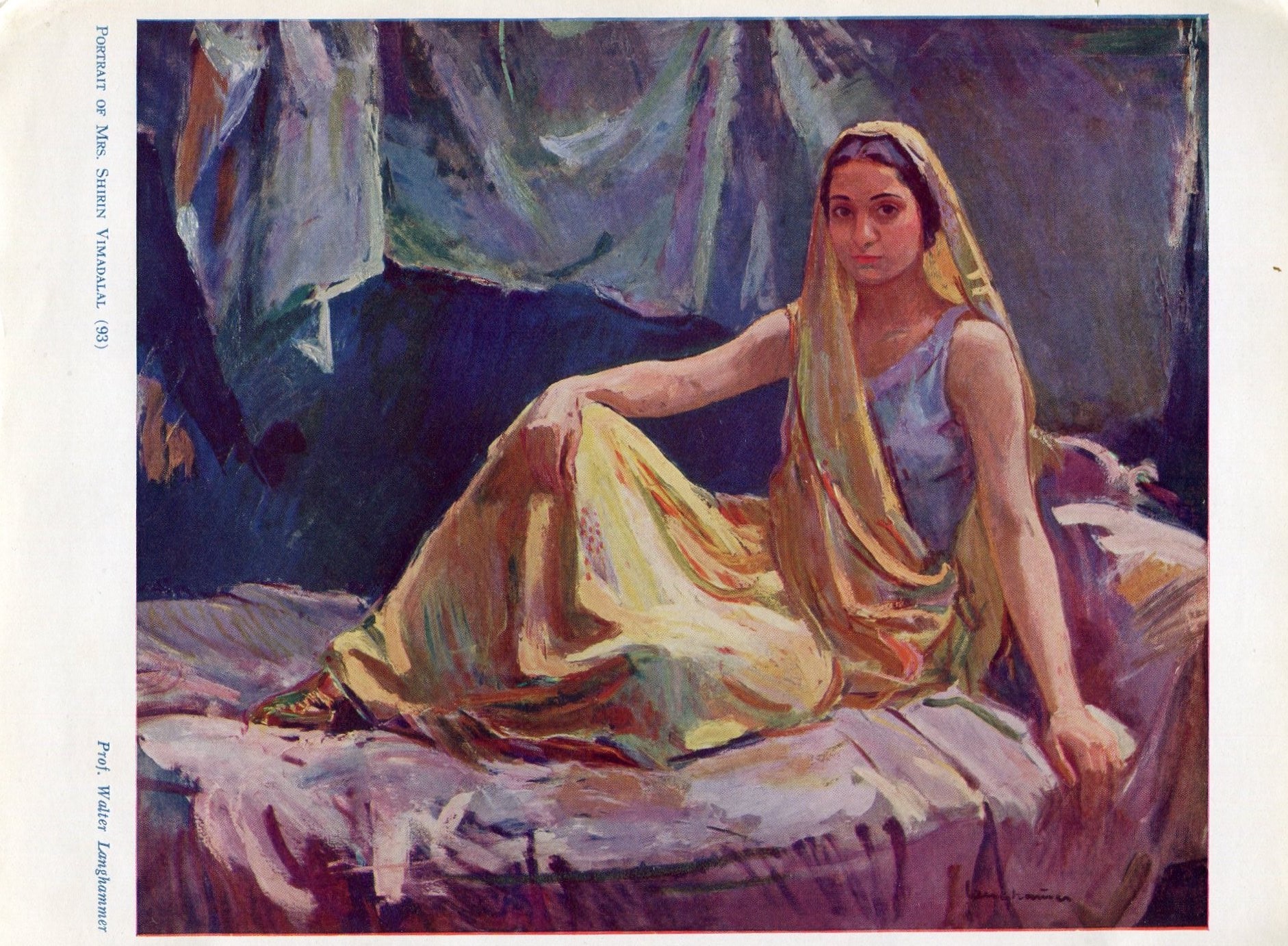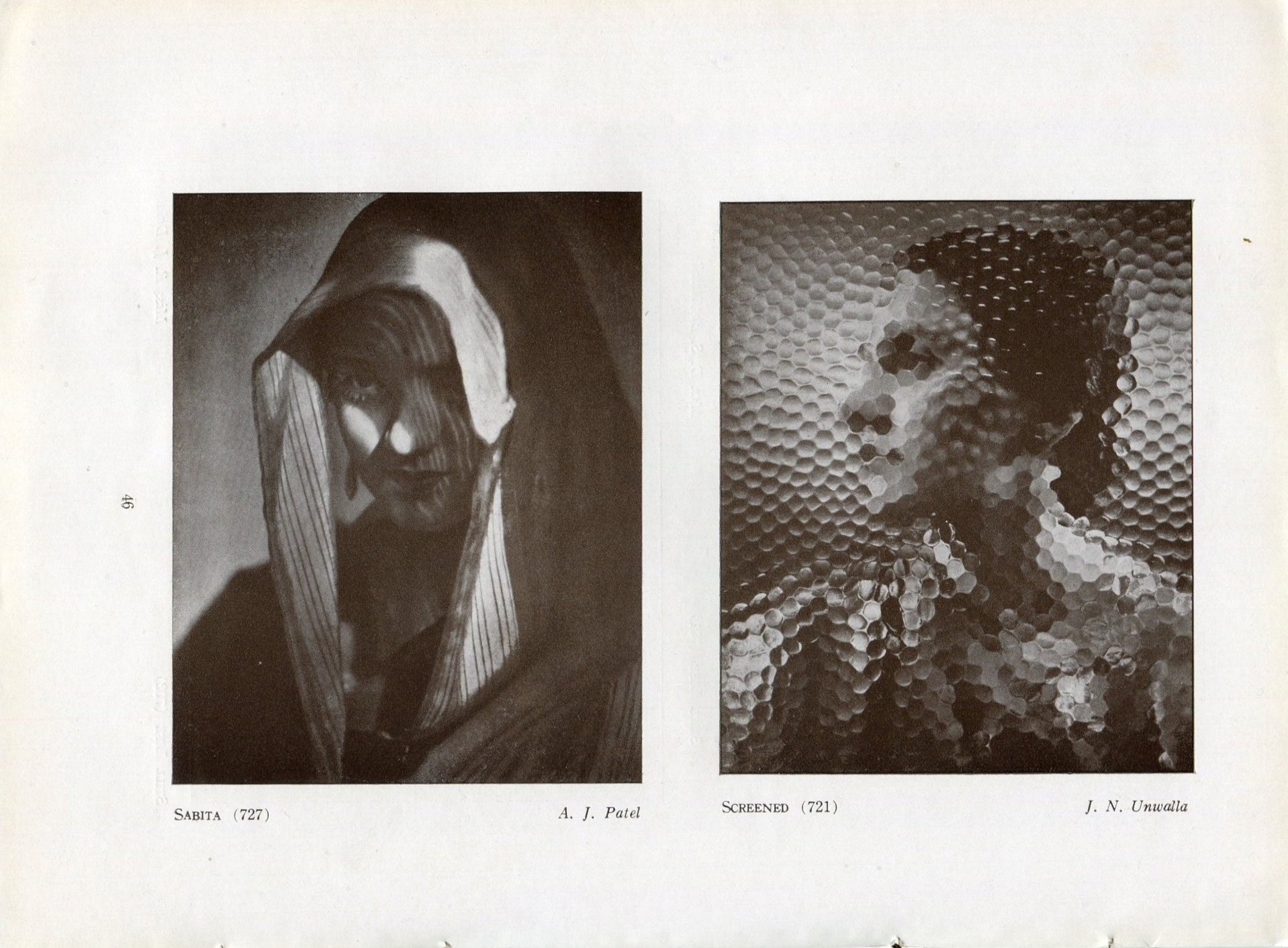Archive
https://archive.metromod.net/viewer.p/69/2951/object/5145-11881496
Archive
Bombay Art Society
- Bombay Art Society
- Association
One of the oldest art societies in India founded by colonial rulers, Bombay Art Society showcased art students and professional artists from all over India, including the Progressive Artists of Bombay.
Word Count: 31
K. C. Marg, Bandra Reclamation, Bandra West, Bombay (now Mumbai).

Title page of the catalogue for the Golden Jubilee Exhibition, exh. cat. Bombay Art Society, Bombay, 1939 (© Bombay Art Society, Photo: Partha Mitter 2021). 
Francis Newton [Souza], Prosperity, Cat. no. 17, n.d. and S.H. Raza, Bori Bunder, Cat. no. 65, n.d. Detail of an inside page, exh. cat. The Bombay Art Society, 1947, 21 (© Bombay Art Society, Photo: Partha Mitter 2021). 
Walter Langhammer, Portrait of Mrs. Shirin Vimadalal, 1939, Detail of an inside page, exh. cat. The Bombay Art Society, 1939, Frontispiece (© Bombay Art Society, Photo: Partha Mitter 2021). 
Title page of the catalogue for the 57th Annual Exhibition, exh. cat. The Bombay Art Society, December 1947 (© Bombay Art Society, Photo: Partha Mitter 2021). 
A.J. Patel, Sabita, cat. no.727, n.d. and J.N. Unwalla, Screened, cat. no. 721, n.d. Detail of an inside page, exh. cat. The Bombay Art Society, 1939, 46 (© Bombay Art Society, Photo: Partha Mitter 2021). Bernstein, Lina. Magda Nachman: An Artist in Exile (Modern Biographies). Academic Studies Press, 2020.
Franz, Margit. “Graz – Wien – Bombay – London: Walter Langhammer, Künstler und Kunstförderer.” Historisches Jahrbuch der Stadt Graz, vol. 40, edited by F. Bouvier and N. Reisinger, Stadt Graz – Kulturamt, 2010, pp. 253−276.
Mitter, Partha. Art and Nationalism in Colonial India 1850–1922. Occidental Orientations. Cambridge University Press, 1994, pp. 69–72.
National Portrait Gallery. “Walter Langhammer 1905–1977.” National Portrait Gallery, www.portrait.gov.au/people/walter-langhammer-1905. Accessed 18 March 2021.
Story of a Hundred Years: The Bombay Art Society 1888–1988, edited by Baburao Sadwelkar, exh. cat. The Bombay Art Society, Mumbai, 1989.
Word Count: 93
- 1888
Abdur Rahman Chughtai, Amrita Sher-Gil, Charles Gerrard, H.A. Gade, Jehangir N. Unwalla, J.P. Gangooly, Kekoo Gandhy, K.H. Ara, Magda Nachmann, M.F. Husain, Pestonji Bomanji, Rudolf von Leyden, Shakir Ali, S.H. Raza, Walter Langhammer.
- Bombay
- Partha Mitter. "Bombay Art Society." METROMOD Archive, 2021, https://archive.metromod.net/viewer.p/69/2951/object/5145-11881496, last modified: 24-06-2021.
-
Kekoo Minochair GandhyFrame Shop OwnerGalleristArt CollectorBombay
Starting from a cosmopolitan milieu for young local artists, Kekoo and his wife Khorshed Gandhy developed a business model that turned the frame shop into Gallery Chemould.
Word Count: 27
Magda Nachman AcharyaArtistTheatre DesignerIllustratorTeacherBombayThe political turmoil of the twentieth century took Magda Nachman from St. Petersburg to Moscow to the Russian countryside, then to Berlin during the 1920s and 1930s and, finally, to Bombay.
Word Count: 31
Iconic Photo of the Progressive Artists’ Group and Their AssociatesPhotographBombayThere are two versions of the PAG photo at the opening of M.F. Husain's first solo exhibition in 1950 (published in 1996 and 2003) and two narratives about the opening.
Word Count: 28
Picture of Rudi von Leyden’ s Bust by Sadanand K. BakrePhotographBombayThe picture of the previously lost and recently located sculpture by Sadanand K. Bakre reflects the relationship between the artist Bakre and the art critic Rudi von Leyden.
Word Count: 28
The Leydens: Sculpture, Paintings, CartoonsExhibitionBombayIn 1948 Albrecht and Rudi von Leyden sold their personal works of art in order to set up an “Artists' Aid Fund”, which became an institution in the following years.
Word Count: 29
Open Studio Evenings by Käthe and Walter LanghammerSalonBombayThe painter Walter Langhammer and his wife Käthe built an informal infrastructure to promote local avant-garde artists and regularly invited them to Open Studio Evenings at their studio.
Word Count: 29
ChemouldGalleryFrame ShopBombayChemould’s history stretches from its beginnings as a manufacturer of chemical mouldings and frames in 1941 over to a hub for art circulation displaying a variety of artists in Bombay.
Word Count: 30
Institute of Foreign LanguagesLanguage SchoolExhibition SpaceLibraryTheatreBombayWith its wide range of cultural activities, the Institute of Foreign Languages − founded in 1946 by the Viennese emigrant Charles Petras − became a glocal contact zone in Bombay.
Word Count: 27
Jehangir Art GalleryArt GalleryAuditorium HallLibraryBombayEfforts to create spaces for the democratic presentation, discussion and reflection of art in Bombay after independence led to the establishment of the Jehangir Art Gallery in 1952.
Word Count: 27
Studio BerkoPhoto StudioBombayStudio Berko was run from August 1939 to 1944 by the Hungarian Jewish avant-garde émigré photographer Ferenc Berko. It allowed him to make a living at a time of global political upheaval.
Word Count: 30
Rudolf von LeydenGeologistAdvertisement SpecialistJournalistArt CriticArt CollectorCartoonistBombayThe advertisement expert, Rudolf von Leyden, became a major art critic and art historian in Bombay in the 1940s, advocating an urgent need for modernism in art in post-colonial India.
Word Count: 30
Emanuel SchlesingerFactory OwnerTechnical DirectorArt CollectorArt CriticBombayThe art collector Schlesinger provided primarily financial aid by creating working opportunities for young artists in post-independence Bombay, and initiated the corporate culture of buying art.
Word Count: 26